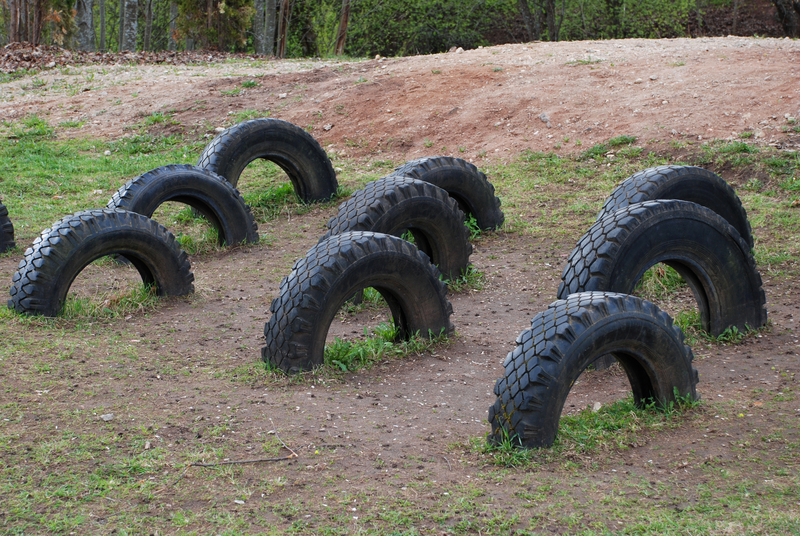How to Minimize Disposal Costs for Large Household Items
Disposing of bulky household items such as furniture, mattresses, and appliances can come with surprisingly high costs if not managed carefully. Knowing how to minimize disposal costs for large household items not only saves you money but also benefits the environment. This comprehensive guide provides actionable insights into cost-effective and sustainable ways to dispose of big furnishings, electronics, and other cumbersome belongings.

Understanding the Challenge of Large Item Disposal
Old sofas, wardrobes, kitchen ranges, and other sizable belongings eventually outlive their usefulness. When it's time to get rid of them, homeowners often face these challenges:
- High landfill or disposal fees
- Limited municipal collection services
- Transporting heavy or oversize items
- Environmental concerns
By learning various strategies for minimizing large item disposal costs, you alleviate financial burdens and reduce landfill impact.
Assess Your Items: Reuse, Donate, or Dispose?
Before arranging for pickup or taking items to the dump, assess if your items have life left in them. This is a crucial step in lowering large furniture removal expenses:
1. Sell or Give Away Usable Items
Why pay to dispose of items if you can pass them on? Here's how to do it effectively:
- Online Marketplaces: Post items on Craigslist, Facebook Marketplace, OfferUp, or Nextdoor. Free listings often attract people willing to haul items away themselves.
- Garage Sale: Organize a neighborhood sale, and offer heavy items at low prices to ensure quick pickup.
- Community Bulletin Boards: Use local community centers, libraries, or religious institutions to promote your giveaway.
2. Donate to Charities
- Non-profits like the Salvation Army, Habitat for Humanity ReStores, and Goodwill often accept furniture and appliances in good condition. Some offer free or low-cost pickup.
- Check donation requirements ahead of time. Some items, such as mattresses and certain electronics, may not be accepted.
3. Offer Items for Repurposing or Recycling
- Metal parts: Many scrap yards accept old appliances, bed frames, and exercise equipment for free or even for cash.
- Cushions, foam, and textiles: Check local recycling centers or specialty recycling programs for these specific materials.
Reducing the volume destined for the landfill directly minimizes the cost of large item disposal.
Comparison: DIY vs. Professional Removal
1. DIY Hauling
- With access to a truck, you can often dispose of items directly at the municipal landfill or transfer station, usually for a flat fee or by the pound.
- *If your city allows curbside bulk pickup, take advantage of it! Many communities offer one or two free pickups per year.*
- Enlist family and friends for heavy lifting to avoid the cost of hiring help.
PRO TIP: Disassemble items (like beds, couches, or shelves) to reduce volume and possibly benefit from lower disposal rates.
2. Professional Junk Removal Services
- Convenient but often expensive. Prices vary based on volume, weight, and type of item.
- Shop around for quotes - some companies price by truckload, others per item.
- Look for deals, coupons, or seasonal specials to cut costs.
- Choose businesses that recycle or donate items to minimize environmental impact and benefit from potential tax deductions for donations.
Save Money with Strategic Planning
1. Take Advantage of Municipal Programs
- Research your city's bulk waste collection policies. Many offer free or low-cost large item pickup on scheduled days.
- Be sure to follow all rules: Place items at curbside, check limits on the number or size of items, and secure required permits if needed.
- Some cities organize annual 'large item disposal events' where residents can drop off multiple items inexpensively.
2. Time Your Disposal for Maximum Savings
- Align disposals with municipal clean-up days to avoid paying private service fees.
- If moving, coordinate unwanted item disposal with your move-out date to minimize repeat trips.
- Dispose of multiple items at once to save on per-visit or per-mile charges.
3. Pooling Resources with Neighbors
- Share the cost of a dumpster rental with neighbors, especially during community clean-up.
- Split junk removal service fees by consolidating neighborhood pickups in one go.
Special Handling for Electronics and Hazardous Materials
Cost to dispose of e-waste and hazardous materials can be significantly higher, but responsible disposal is necessary to comply with regulations and avoid fines.
1. E-Waste (TVs, Computers, Refrigerators)
- Retailers like Best Buy or Staples have take-back programs for old electronics, often for free or a small fee.
- Some cities sponsor 'e-waste recycling days' at no cost to residents.
- Utility companies may offer rebates or free pickup for working appliances.
2. Hazardous Materials (Paint, Chemicals, Batteries)
- Never place these items in regular trash or bulk item pickup.
- Locate local hazardous waste collection sites using your city's website or resources like Earth911.
- Save up materials for annual or semi-annual hazardous material roundup events to avoid multiple trips.
Eco-Friendly Disposal: Reduce, Reuse, Recycle!
Environmentally conscious disposal methods often cost less - and sometimes nothing at all. Here's how:
- Break down items into recyclable components (metal, wood, glass) and take them to the proper facility.
- Contact local artists or craftsmen who may repurpose old materials.
- List items as 'free for parts' to attract hobbyists, animal shelters (for bedding), or charities in need of repairable items.
Recycling Centers
- Many centers charge less for recyclable drop-offs (appliances, metal, glass) versus mixed waste.
- Inquire about 'appliance bounty' programs that pay you for certain scrap items.
DIY Disassembly and Cost Reduction Tips
- Reduce size and bulk: Break down sofas, beds, and tables to fit the smallest space possible.
- Separate materials: Remove metal, foam, and wood to enable easy recycling and reduce the overall weight - costs are often by weight at dumps.
- Bag and label small parts for easy handling and potential reuse or donation.
TIP: Wear gloves and use appropriate tools. If uncertain, look up disassembly tutorials online for guidance.
Cost Comparison Chart: Disposal Methods
| Disposal Method | Typical Cost | Notes |
|---|---|---|
| Municipal Pickup | Free - $50/item | Limited per year, must schedule in advance |
| Landfill Drop-off (DIY) | $20 - $100/load | Higher for electronics or hazardous materials |
| Professional Junk Removal | $70 - $500/load | Based on volume/weight; convenient but costly |
| Donation | Usually Free | Must be clean and functional; tax deductions possible |
| Recycling Center | Free - $30/item | Often cheaper for metal/electronics |
Checklist: How to Minimize Large Household Item Disposal Costs
- Identify items for sale, donation, or recycling before arranging paid removal
- Research all local options including free municipal or charity pickups
- Disassemble items to reduce disposal charges
- Pool resources or organize joint pickups with neighbors
- Dispose of multiple items at once to save on per-load charges
- Reclaim materials for DIY reuse or recycling
- Time disposals with scheduled community clean-up events
- Always check for special requirements regarding electronics or chemicals

Frequently Asked Questions about Large Item Disposal
Q: How can I find free or low-cost bulk item collection?
A: Check your city or county waste department website for guidelines on curbside pickups, annual clean-out events, or dedicated bulk item drop-off centers. Many cities provide these services at no or minimal cost to residents.
Q: Is it legal to leave large items by the curb?
A: Only on scheduled pickup days or as permitted by your municipality. Unauthorized dumping can result in substantial fines. Always follow local regulations.
Q: Can I get a tax deduction for donating big household items?
A: Yes, if you donate to a qualified charity. Get a receipt and keep records for tax filing purposes.
Q: What happens to old appliances or mattresses at the landfill?
A: Many are now required to be recycled by law, especially refrigerators and mattresses. Recycling reduces landfill space and can save on disposal fees.
Take Action: Save Money and the Planet
With proper planning and a combination of reuse, donation, recycling, and strategic timing, you can dramatically reduce what you pay--and how much ends up in landfills. Doing your research and leveraging community resources is key to minimizing disposal costs for large household items.
Not only will you save money, but you'll also contribute to a cleaner community and a greener planet.
Ready to start? Review your local waste management guidelines, identify what you can donate or recycle, and organize your large-item disposal for maximum savings today!
